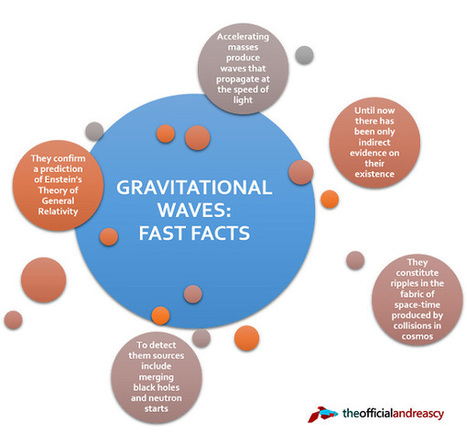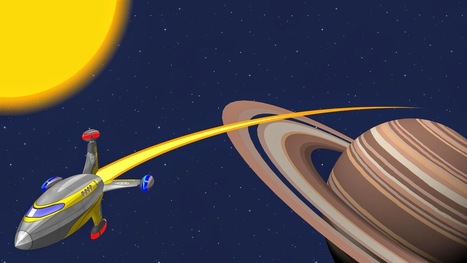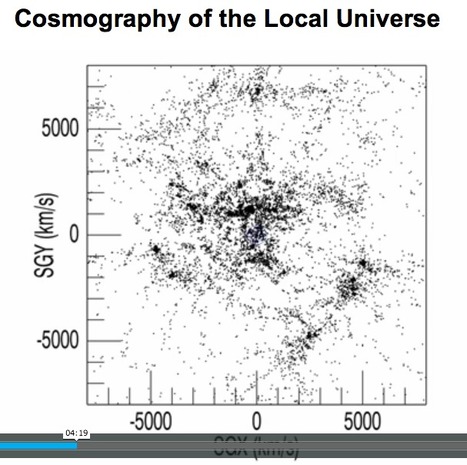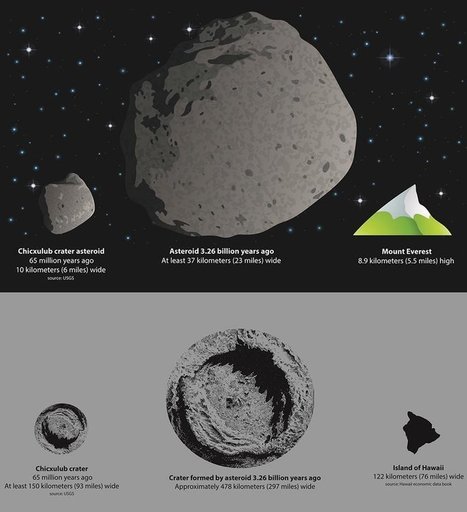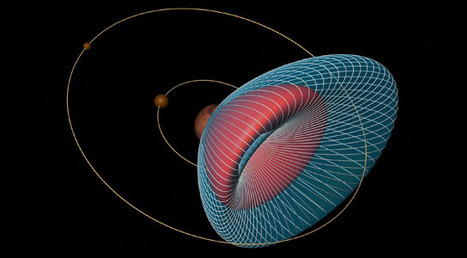I feel so alive.
Get Started for FREE
Sign up with Facebook Sign up with X
I don't have a Facebook or a X account

 Your new post is loading... Your new post is loading...
 Your new post is loading... Your new post is loading...
Get insights on the breakthrough discovery of Einstein's gravitational waves and why it matters.
THE OFFICIAL ANDREASCY's insight:
A new frontier for Astronomy. Historical moment for Science. Don't miss out! 
Andreas Christodoulou's curator insight,
February 18, 2016 9:36 PM
It's worth reading. Get a roundup of the latest scientific breakthrough that could shape up the future. 
Stephania Savva, Ph.D's curator insight,
February 19, 2016 4:36 AM
Know more about the recent discovery of gravitational waves and how it contributes to knowledge of the universe.

Tony Guzman's curator insight,
February 20, 2016 1:17 PM
This article helps explain what the recent gravitational wave detection means. Great summary for even the most scientifically novice.
Introducing outer space exploration and travel and why it matters more than ever. 
Wilfried Andral's curator insight,
March 23, 2015 8:48 AM
Like space travel? Read more here: http://goo.gl/vb45Q1 
Jane Shamcey's curator insight,
March 23, 2015 8:51 AM
All about space travel in this great post: http://bit.ly/1DOboFb
(Phys.org)—NASA and an international team of planetary scientists have found evidence in meteorites on Earth that indicates Mars has a distinct and global reservoir of water or ice near its surface.
From
irfu
The three-dimensional structure of the local universe may one day become as familiar as our local geography thanks to a new generation of maps that reveal our neighbourhood’s rich complexity and our place within it.
The geography of our world is one of the great cultural invariants. There can hardly be the person on the planet who isn’t familiar with the shape of the continents and how they dovetail together or of the Earth is a pale blue sphere orbiting the Sun with seven other planets.
Given a three-dimensional model of the solar system, almost everyone can zoom in from beyond the Oort cloud to the planet Earth and then even further to the street where they live. It is powerful shared knowledge. But at greater distances, our geographical knowledge becomes a little blurred. Many people will have seen the extraordinary three-dimensional models of the filamentary structures that galaxies form on the larger scales in our universe.
And yet these structures remain strangely unfamiliar. Given an unlabelled three-dimensional model of this large-scale structure of the universe, who could point to the place we call home?
All that should begin to change in the next few years with the increasingly accurate maps that cosmologists are compiling of the three-dimensional distribution of galaxies within universe.
Today, Helene Courtois at the University of Lyon in France and a few buddies show off this newfound knowledge in a movie (and accompanying paper) that they’ve created to explore the rich structure of our galactic neighbourhood.
One of the key questions that this data can help to answer is whether the distribution of visible mass in the universe is an accurate reflection of the distribution of dark matter. Courtois and co so that the data shows that this is indeed the case.
The film does a fine job of showing the three-dimensional structure of this space. It also reveals the limitations of human language in describing this complex tapestry. That’s not really surprising given that our vocabulary has evolved to describe a geography that is essentially two-dimensional.
Via Dr. Stefan Gruenwald
From
vimeo
A truly powerful image generates questions. The incredible night photos and time-lapse movies NASA has been sharing with us provoke questions about our planet.
Awesome movie!
Via Patrice AFRIAT, Guillaume Decugis, Sakis Koukouvis |
Do you believe in life on exoplanets? Learn more about what has been discovered so far.
THE OFFICIAL ANDREASCY's insight:
Learn about the latest scientific news on life on exoplanets. 
Andreas Christodoulou's curator insight,
August 30, 2016 11:32 AM
If you are fascinated by the prospect of living on exoplanets, check this article: http://tinyurl.com/LifeonExoplanets
From
medium
Introducing outer space exploration and travel and why it matters more than ever.
THE OFFICIAL ANDREASCY's insight:
An Overview of Space Exploration & Space Travel.
This Asteroid Impact Dwarfed the Dino-Killer
From
phys
The strangest class of exoplanets found to date might be even stranger than astronomers have thought. A new model suggests that they are partially heated by electric currents linked to their host stars. Florida Gulf Coast University (FGCU) astronomer Dr. Derek Buzasi has proposed a model in which electric currents arising from the interaction between the planet's magnetic field and the hot charged wind from the star flow through the interior of the planet, heating it like an electric toaster. Many of the planets found by the Kepler mission are of a type known as "hot Jupiters." While about the same size as Jupiter in our own solar system, these exoplanets are located much closer to their host stars than even Mercury is to our Sun, meaning that their atmospheres are heated to temperatures of thousands of degrees.
One problem scientists have had in understanding the hot Jupiters is that many are inflated to sizes even larger than expected for planets so close to their stars. Explanations for the "puffiness" of these exoplanets generally involve some kind of extra heating for the planet. Proposed sources for the extra heat have included tides and interactions between the high-speed winds and magnetic fields expected on these planets, but none of these models successfully explains the observation that more magnetically active stars tend to have puffier hot Jupiters orbiting around them.
"This kind of electric heating doesn't happen very effectively on planets in our solar system because their outer atmospheres are cold and don't conduct electricity very well," says Buzasi. "But heat up the atmosphere by moving the planet closer to its star and now very large currents can flow, which delivers extra heat to the deep interior of the planet—just where we need it." More magnetically active stars have more energetic winds and would provide larger currents and more heat to their planets.
The currents start in the magnetosphere, the area where the stellar wind meets the planetary magnetic field, and enter the planet near its north and south poles. This so-called "global electric circuit" exists on Earth as well, but the currents involved are only a few thousand amps at 100,000 volts or less. On the hot Jupiters, currents can amount to billions of amps at voltages of millions of volts.
"It is believed that these hot Jupiter planets formed farther out and migrated inwards later, but we don't yet fully understand the details of the migration mechanism. The better we can model how these planets are built, the better we can understand how solar systems form. That in turn, would help astronomers understand why our solar system is different from most, and how it got that way." Via Dr. Stefan Gruenwald
Claroscuro's curator insight,
August 31, 2023 12:28 PM
Este modelo sugiere que aún existen muchos tipos de planetas muy diferentes de los que se calcularon antes de que surgieran este los actuales modelos de observaciones.
"Scientists estimated that several large impact events on Mars could have launched significant amounts of Martian material into space, leading them to believe that if life on Mars exists or existed within the last 10 million years, ..." Via v.kaploun, Sakis Koukouvis
We seem to be inside a "local bubble" in a network of cavities in the interstellar medium, probably carved by massive star explosions millions of years ago. The interstellar medium (or ISM) is the matter that exists in the space between the star systems in a galaxy. This matter includes gas in ionic, atomic, and molecular form, dust, and cosmic rays. It fills interstellar space and blends smoothly into the surrounding intergalactic space. Via Sakis Koukouvis |





